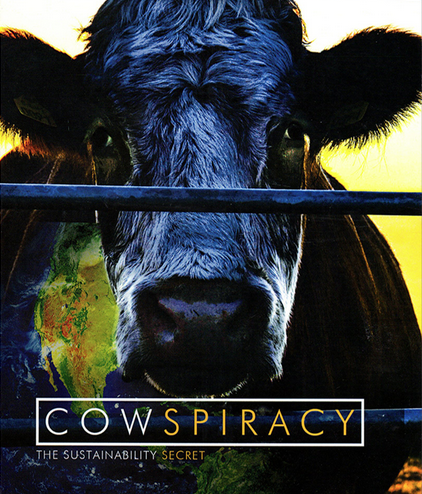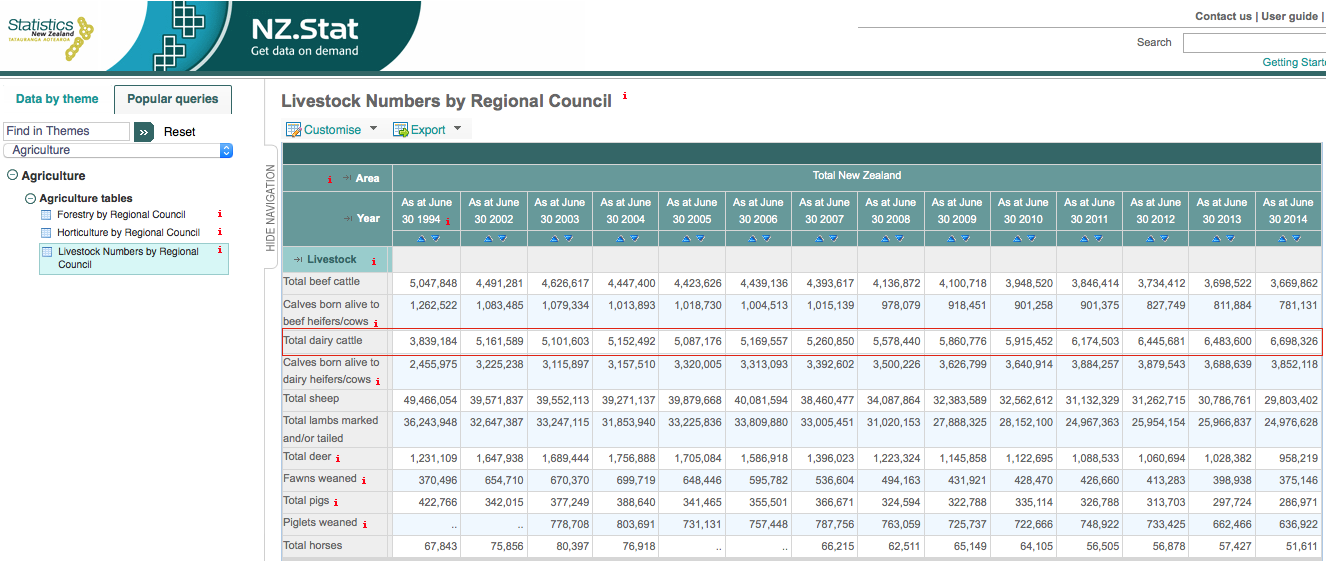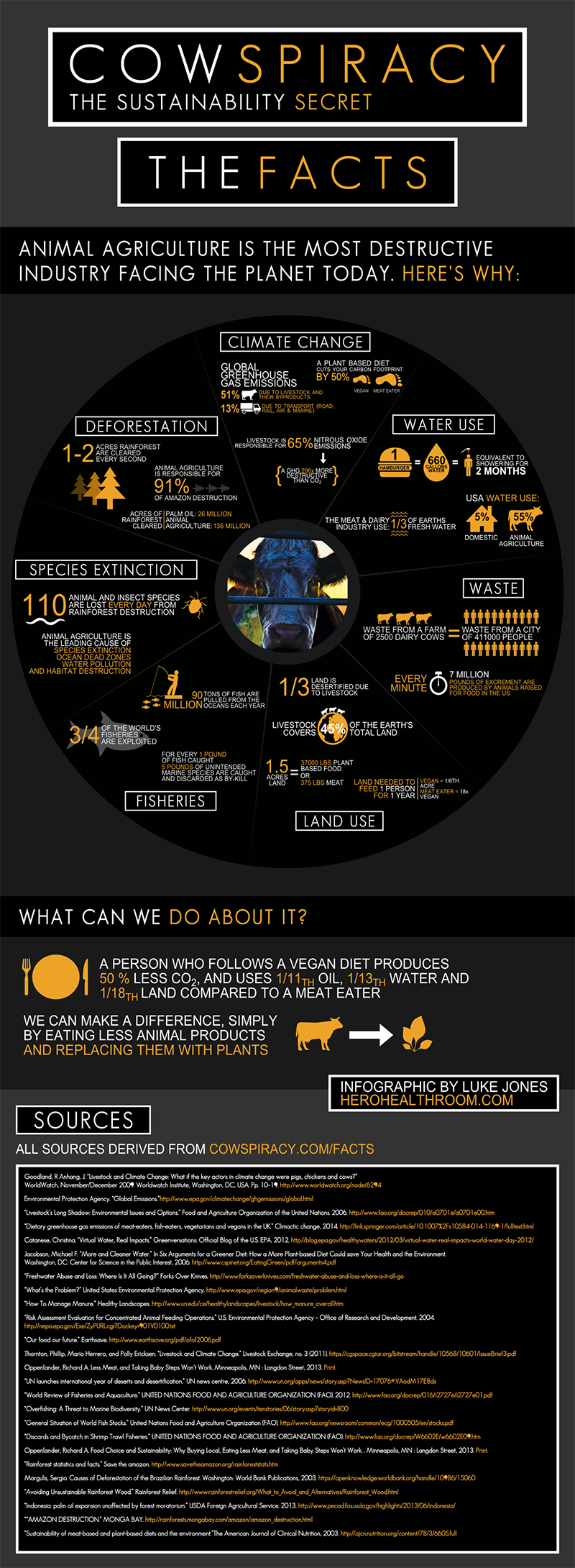 In New Zealand, animal agriculture is huge business. According to government statistics, there were nearly 3.7 million beef cattle, over 6.4 million dairy cattle, and over 30 million sheep in New Zealand in June 2013 1. Another vitally important industry in New Zealand is tourism, and our marketing image is that of a clean, green and unspoilt haven. However, these two industries are ultimately incompatible, and New Zealand’s heavy investment in animal agriculture increasingly comes at the expense of our pristine image. One prevalent example, waterways loaded with farm waste do not serve New Zealand’s image well.
In New Zealand, animal agriculture is huge business. According to government statistics, there were nearly 3.7 million beef cattle, over 6.4 million dairy cattle, and over 30 million sheep in New Zealand in June 2013 1. Another vitally important industry in New Zealand is tourism, and our marketing image is that of a clean, green and unspoilt haven. However, these two industries are ultimately incompatible, and New Zealand’s heavy investment in animal agriculture increasingly comes at the expense of our pristine image. One prevalent example, waterways loaded with farm waste do not serve New Zealand’s image well.
The problem of environmental degradation from animal agriculture is a worldwide one. The current high demand for meat and dairy in Western countries has lead to intensive farming practices that are taking a huge toll worldwide. In the feature-length documentary Cowspiracy: The Sustainability Secret (2014) Kip Andersen and Keegan Kuhn explore the impact of animal agriculture on the global environment. The facts they have compiled make plain the massive environmental havoc being wreaked by animal agricultural industries. According to the film’s website, “animal agriculture is the leading cause of species extinction, ocean dead zones, water pollution, and habitat destruction”. The statistics make grim reading. Some of the key findings of Cowspiracy 2 are summarized below.
Global Warming
Livestock and their byproducts account for at least 51% of all worldwide greenhouse gas emissions. Methane has a global warming power 86 times that of CO2. Livestock is responsible for 65% of all emissions of nitrous oxide – a greenhouse gas 296x more destructive than carbon dioxide, and which stays in the atmosphere for 150 years.
Water Consumption
Water consumption for animal agriculture ranges from 34-76 trillion gallons annually. A massive 2,500 gallons of water are needed to produce 1 pound of beef. Worldwide, cows drink 45 billion gallons of water and eat 135 billion pounds of food each day, compared to humans who drink 5.2 billion gallons of water and eat 21 billion pounds of food worldwide each day. One third of the planet is now desertified, with livestock as the leading driver.
Land and Ocean
The leading cause of rainforest destruction is livestock and feed crops, with 1-2 acres of rainforest cleared every second. Up to 137 plant, animal and insect species become extinct every day due to rainforest destruction. Livestock now covers 45% of the earth’s total land area, with 2-5 acres of land used per cow. Every minute, 7 million pounds of excrement are produced by animals raised for food in the US. Livestock operations on land have created more than 500 nitrogen flooded dead zones in the world’s oceans. Scientists estimate as many as 650,000 whales, dolphins and seals are killed every year by fishing vessels, along with the 90 million tons of fish pulled from the oceans each year.
For every 1 pound of fish caught, up to 5 pounds of unintended marine species are caught and discarded as by-kill; it has been predicted that we could see fishless oceans by 2048.
The Solution
What kind of diet can we adopt to help minimize this environmental catastrophe? The answer is not always popular, but is one which we cannot continue to ignore. The average American consumes 209 pounds of meat per year; this is not sustainable. A massive reduction in the consumption of animals and their byproducts is vital. We are currently growing enough food to feed 10 billion people, more than the current worldwide population. Much of this is fed to livestock, while people in disadvantaged countries die from hunger and malnutrition. A big shift towards plant-based consumption will result in a far more efficient way of feeding the Earth’s population. 1.5 acres of land can produce 37,000 pounds of plant-based food, compared to the 1.5 acres required to produce just 375 pounds of meat. Each day, a person who eats a vegan diet saves 1,100 gallons of water, 45 pounds of grain, 30 sq ft of forested land, 20 lbs CO2 equivalent, and one animal’s life. If we are to preserve the beauty and resources of our planet, we need to think globally and treat our environment with respect. There may not be a second chance.
Sources:
1. Statistics New Zealand: Livestock Numbers by Regional Council
2. Cowspiracy: The Facts


One Response to “Cowspiracy: Environmental Impacts Of Animal Agriculture”
Agree or disagree with this post? Leave a comment below.
Your email address will not be published.
Enter Code: *
Do not include website links or HTML in the reviews, they will be removed.


October 13, 2015
I have been a vegetarian for twenty four years. I watched Cowspiracy and the following day became vegan. How could you not! It became my moral obligation to the environment and as a mother to the continued care of my children and the greater community.